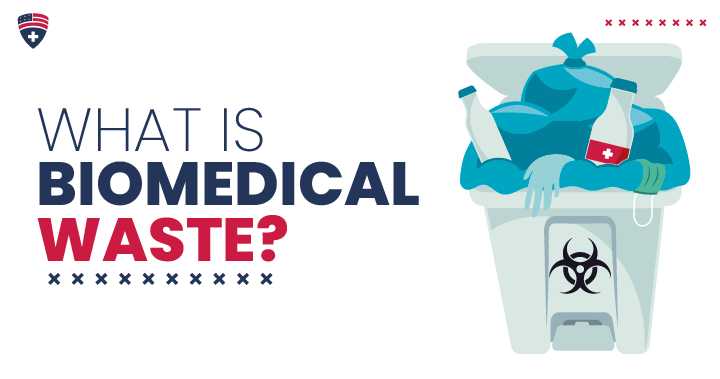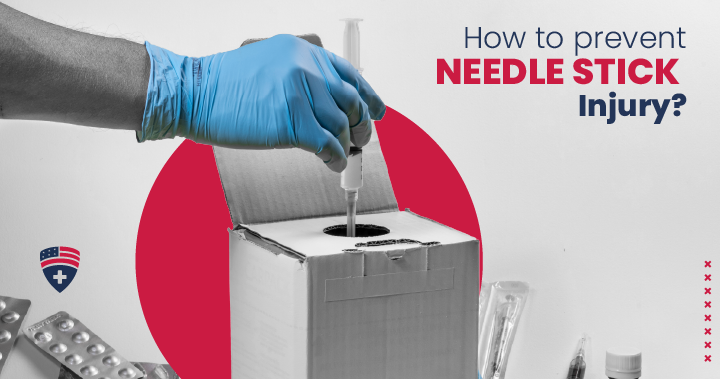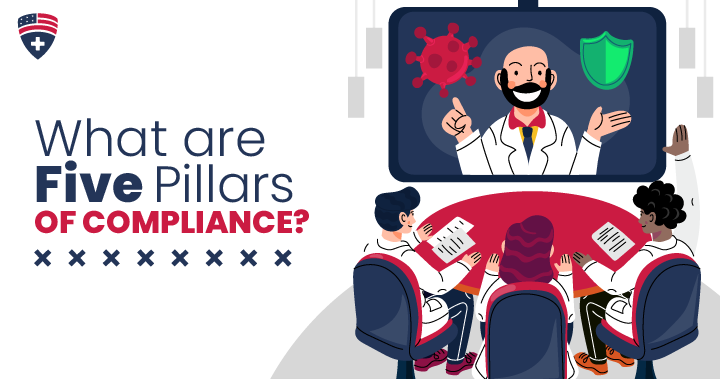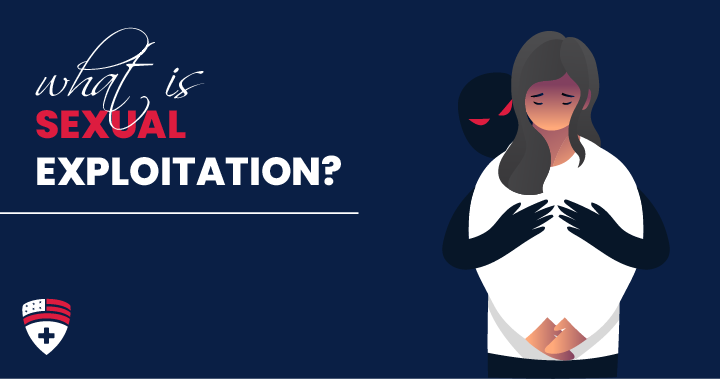
What Is Biomedical Waste?
What does BMW stand for? It is for Biomedical waste.
We have heard about a lot of varieties of waste. You may know about household, hazardous, e-waste, and building waste. And what is biowaste?
A lot of people do not know about it. What kinds of waste there are and the risks that come with them?
Biomedical waste is very dangerous and can spread diseases that are very sick and can even kill.
Because of this, it is a worldwide issue. Getting rid of biomedical waste properly is very important to protect people’s health.
American Healthcare Compliance course Hazard Communication for Healthcare teaches Healthcare providers how to recognize and talk about chemical hazards.
Let’s talk about in detail what is biomedical waste? and what are the emergency procedure guide?
Biomedical Waste Definition
According to WHO BMW stands for “biomedical waste.” This includes waste that is made when people or animals are diagnosed, treated, or immunized, as well as when biologicals are made or tested. It also includes waste that is made during research activities that are related to these activities.
These things are what they do produce medical waste:
- Diagnosis
- Treatment
- Immunization
It spreads easily, is very poisonous, and kills. Hospitals and other places that deal with medicine make a lot of waste.
As a result, diseases like HIV, hepatitis B and C, tetanus, and others that are airborne or in the blood are spread.
People who pick up waste, and work in transportation, as well as doctors and other jobs, are affected. Basically, everyone is involved with the waste.
Classification of Biomedical Waste
Biomedical waste is put into different groups based on where it comes from and how dangerous it might be. This group of categories might include:
- Infectious Waste: Waste that contains pathogens or infectious agents capable of causing diseases in humans.
- Sharps Waste: It includes needles, syringes, scalpels, and other sharp objects that can cut or infect others.
- Hazardous Chemical waste: Substances, reagents, and solutions that are used in medical procedures or laboratories and may be harmful to human health.
- Radioactive Waste: It includes things that have been tainted with radioactive materials that were used for imaging or treatment.
- Pathological Waste: It includes tissues, organs, body parts, or fluids from people or animals that are taken out during medical procedures or autopsies.
Biomedical Waste Management
The right way to handle biomedical waste will help prevent infections, injuries, and pollution of the environment. Biomedical waste has to be safely moved, stored, thrown away, and handled in labs and healthcare facilities that follow strict rules and guidelines. Here are some important management techniques:
- Sorting
Putting different types of biomedical waste in different piles at the source of production to keep them from mixing and to make getting rid of them easier.
- Packaging
Put waste in pressurized container that are safe and will not leak or puncture so that it does not get broken or spilled when it is being moved or handled.
- Labeling
Putting labels on containers that are easy to read and have the right symbols and words to show what is inside and any possible risks.
- Placement
Putting biomedical waste in hard-to-reach places and controlling the temperature and airflow to stop smells and microbes from growing.
- Transportation
Taking trash to authorized treatment and disposal facilities using licensed carriers and authorized vehicles safely and securely.
- Treatment
To kill pathogens and cut down on the amount that needs to be thrown away, biomedical waste is burned, autoclaved, or chemically disinfected.
- Disposal
Hospital disposable waste must be thrown away in a certain way to keep it safe and sanitary. This could mean using rigid containers that cannot be punctured, biohazard bags, or special trash cans.
Emergency Procedure Guide
In a biomedical waste emergency, proper procedures must be followed to protect people and reduce risks. If you need to deal with biological waste in an emergency, here is a step-by-step guide:
- Assess the Situation
Quickly figure out what kind of biological waste emergency it is and how bad it is.
Find out right away if there are any risks or dangers to people, the environment, or the health of the public.
- Notify Authorities
Tell the right people right away about the emergency, like emergency response teams, facility managers, or government agencies in charge of safety.
Give specific details about the kind and amount of biological waste that is being used, as well as any possible dangers that might be present.
- Secure the Area
Set up a perimeter around the affected area to keep people from getting in without permission and stop the contamination from spreading as much as possible.
Put up warning signs, caution tape, or barriers to block off the area and keep people from getting in.
- Protective Equipment
Personal protective equipment (PPE) like gloves, goggles, masks, and protective clothing should be worn by everyone helping with the emergency so that biological hazards are not released into the air.
- Containment and Cleanup
To stop the spread of biological waste, use absorbent materials, spill kits, or containment barriers.
Follow the set steps for cleaning up leaks or spills, which should include steps for disinfecting and decontaminating.
- Disposal
Get rid of contaminated materials and trash according to established rules and regulations.
Use biohazard waste containers or bags to keep biological waste contained and get rid of it properly.
- Documentation
Keep detailed records of the emergency response activities, such as the date, time, type of emergency, actions taken, and people who were involved.
Maintain accurate records to meet regulatory requirements and for future use.
- Debriefing and Review
Once the emergency is over, hold a debriefing session with the people who helped to go over the response, find places where things could have been done better, and make any necessary changes.
Update emergency response plans and procedures based on lessons learned from the incident.
- Training and Preparedness
Staff should get regular training and practice on how to handle biological waste in an emergency.
Make sure that everyone on staff knows what to do in an emergency and what their roles are.
In Conclusion, What is Biomedical Waste?
Biomedical waste that is not properly disposed of puts the environment and public health at great risk.
To stop infections, harm, and pollution, people need to know about the different kinds of biomedical waste and use the right management methods.
Healthcare facilities that follow emergency procedure guide and make sure their staff knows what they need to do to be trained and ready can lower risks and protect both the public and their staff from the harmful effects of biomedical waste.
FAQs
What is the biomedical waste definition?
Biomedical waste (BMW) is any waste that is made when patients are diagnosed, treated, or immunized as part of research involving humans or animals, or when biological or health camps are made or tested.
What is the difference between medical waste and biomedical waste?
Medical waste is a more general term for all the trash that healthcare facilities produce.
Biomedical waste, on the other hand, is a subset of medical waste that only includes potentially infectious trash that is created during medical procedures that use biological materials.
What are the most common types of medical waste?
There are four main types of medical waste:
- Sharps
- Dangerous
- Infectious
- Radioactive






